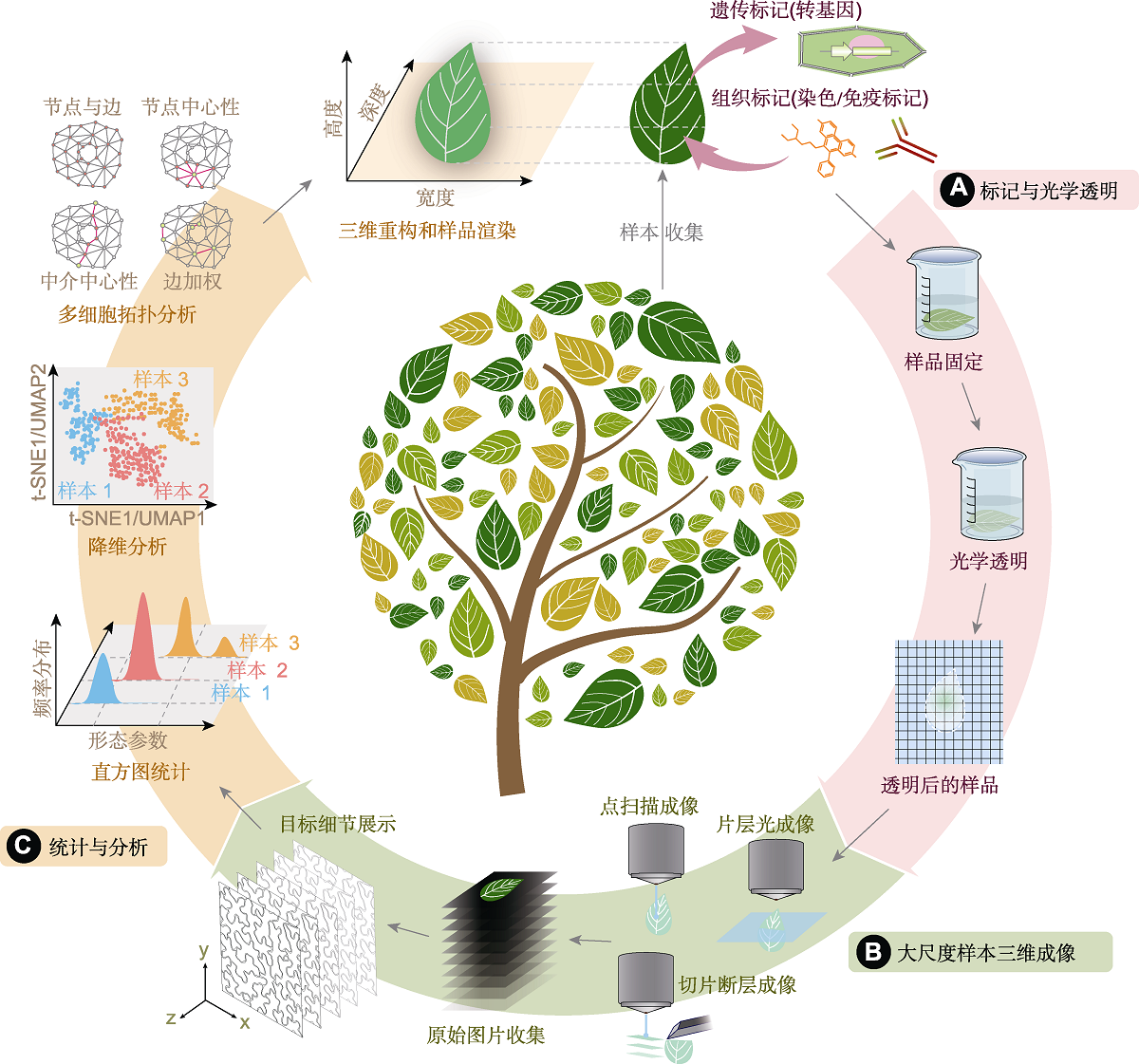图1. 植物样本光学透明、三维(3D)成像和数据分析流程
(A) 植物样本的标记与光学透明, 植物样本的标记主要分为遗传标记(转基因)和组织标记(免疫标记和染料染色); (B) 光学透明后的植物样本3D成像, 可借助光片层荧光显微镜、激光扫描共聚焦显微镜和连续切片断层扫描等方法, 收集连续光学切片的原始图像后, 即可获取目标三维图像信息; (C) 植物样本三维信息统计分析主要包括感兴趣参数的直方图统计、降维分析(UMAP和t-SNE)和多细胞网络拓扑分析
Figure 1. Workflow of optical clearing, three-dimensional (3D) imaging and statistical analysis of plant sample
(A) Labeling and optical clearing of plant sample, mainly including genetic labeling (transgene) and histological labeling (immunolabeling and dyeing); (B) 3D imaging of optical cleared plant sample, 3D imaging mainly depends on light-sheet fluorescence microscopy, laser scanning confocal microscopy and serial section tomography, after raw images collection of serial optical sections, 3D images of interest target are displayed; (C) Statistical analysis of plant sample after 3D reconstruction, mainly containing histogram statistics of interest parameters, dimension reduction analysis (uniform manifold approximation and projection (UMAP) and t-distributed stochastic neighbor embedding (t-SNE)) and topological analysis of a multicellular network

